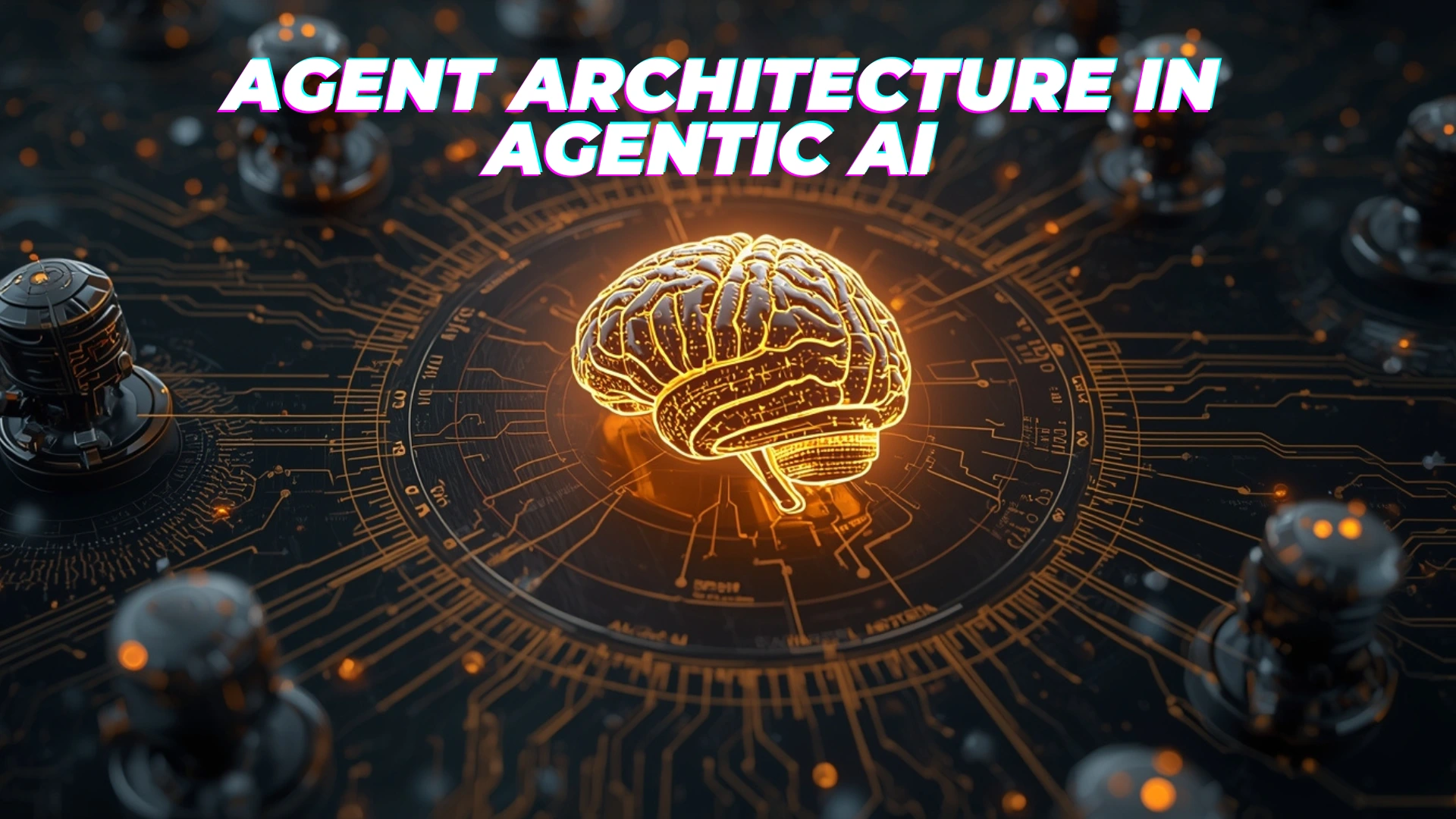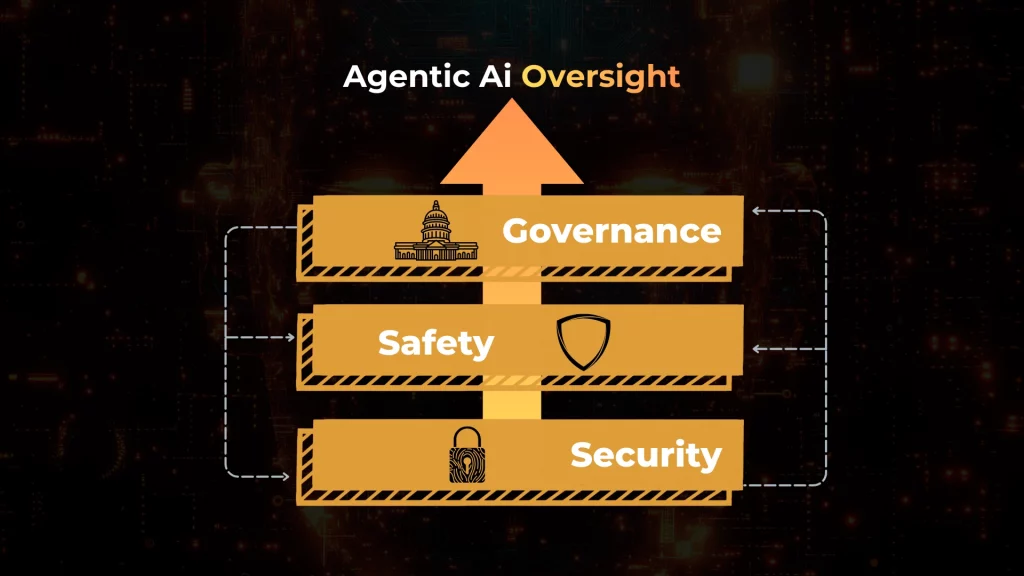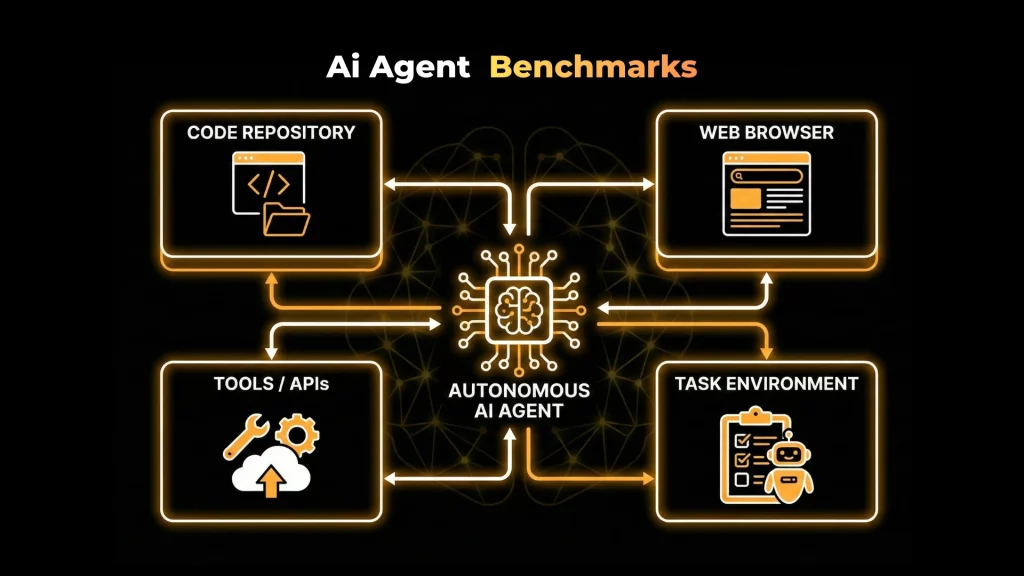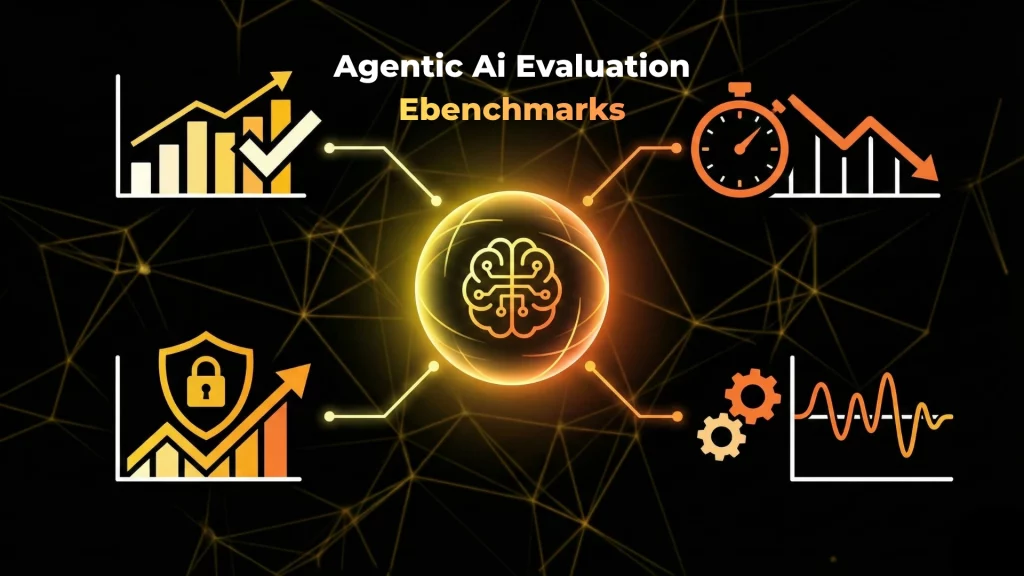Introduction — The Hidden Blueprint of Intelligent Systems
Artificial Intelligence has progressed beyond data prediction and content generation.
The new frontier is autonomy systems that can reason, plan, and act independently.
At the heart of this shift lies Agent Architecture, the structural foundation that transforms models into goal-driven cognitive systems.
In this article, we’ll explore how agent architecture defines modern Agentic AI, how reasoning patterns shape decision-making, and why understanding these frameworks is essential for building trustworthy autonomous intelligence.
What Is Agent Architecture in Artificial Intelligence?
Agent architecture is the cognitive skeleton of an intelligent system, the design that determines how an AI agent perceives information, reasons about it, and executes actions.
It establishes the Perception–Reasoning–Action (PRA) Loop, the same principle that underpins human cognition:
agents observe their environment, think about what to do next, act, and then learn from the outcome.
The Role of Architecture in Agentic AI
In Agentic AI, architecture governs autonomy.
While traditional AI systems respond to fixed commands, agentic architectures enable initiative allowing agents to pursue defined goals through reasoning and feedback.
Every decision is the result of architectural coordination between perception, planning, memory, and execution modules.
The Core Components of Agent Architecture
Every autonomous agent follows a modular design.
These components form the building blocks of computational reasoning.
Perception and Reasoning Loops
Perception modules interpret incoming signals text, data, or visual input and convert them into actionable context.
Reasoning layers (often powered by Large Language Models) evaluate possibilities, prioritize options, and form decisions using frameworks such as ReAct or Tree of Thoughts.
Memory and Context Layers
Agents rely on memory to maintain continuity of thought.
Short-term context windows preserve active discussions, while vector databases such as Pinecone, FAISS, or Weaviate provide long-term recall for knowledge retrieval.
This persistence enables reflection and learning.
Action and Evaluation Modules
Once reasoning concludes, the agent acts through APIs or tools.
A Critic or Reflexion module evaluates results, ensuring that outcomes meet predefined success metrics before storing lessons for future improvement.
AI Agent Architecture Diagram — The Cognitive Blueprint
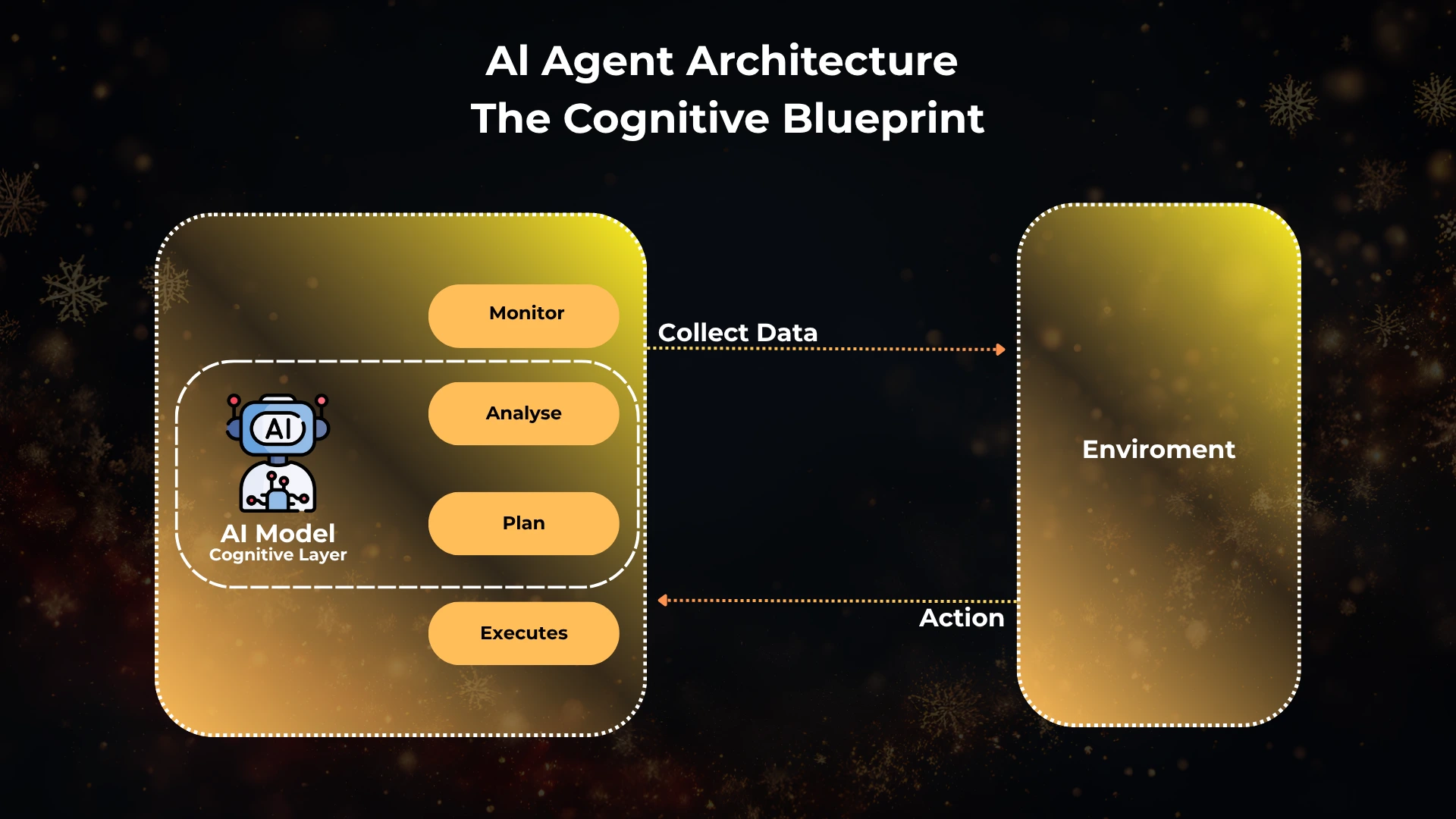
Agentic AI Architecture — Bridging Cognition and Action
Traditional automation executes; Agentic AI architecture decides and adapts.
It combines three technological foundations:
- LLMs for reasoning and natural-language understanding.
- Machine Learning layers for continuous optimization.
- Orchestration frameworks for stability, safety, and collaboration.
How Architecture Enables Purpose-Driven Autonomy
In agentic systems, architecture is not static code, it’s a living network of reasoning paths.
Agents set goals, plan multi-step actions, and self-correct through reflection.
Frameworks like LangGraph visualize this process as interconnected reasoning nodes, making decision chains transparent and auditable.
Cognitive Architecture and AI Design Principles
Cognitive architecture focuses on replicating how humans think.
When applied to Agentic AI, it guides how agents interpret context, reason about choices, and align outcomes with intent.
Modularity and Transparency
Each component of the architecture functions independently but communicates through a shared state.
This modular design simplifies scaling and observability.
Transparency layers log every reasoning step, addressing the “black-box” problem in AI decision-making.
Adaptability and Human Alignment
Adaptive feedback ensures the system evolves safely.
Through human-in-the-loop checkpoints, agents remain aligned with ethical and organizational values ensuring autonomy never detaches from human oversight.
Multi-Agent System Architecture & Collaboration
Role-Based Collaboration
Complex tasks require cooperation.
Multi-agent system architecture distributes responsibilities among specialized agents, researchers, planners, evaluators each running its own cognitive loop.
The CrewAI framework demonstrates this through role-based teamwork where agents share goals and communicate contextually.
Orchestration and Shared Memory
Collaboration depends on orchestration.
Frameworks like Semantic Kernel and LangGraph coordinate message passing, memory sharing, and conflict resolution.
This creates an ecosystem of collective intelligence, where one agent’s experience becomes another’s context.
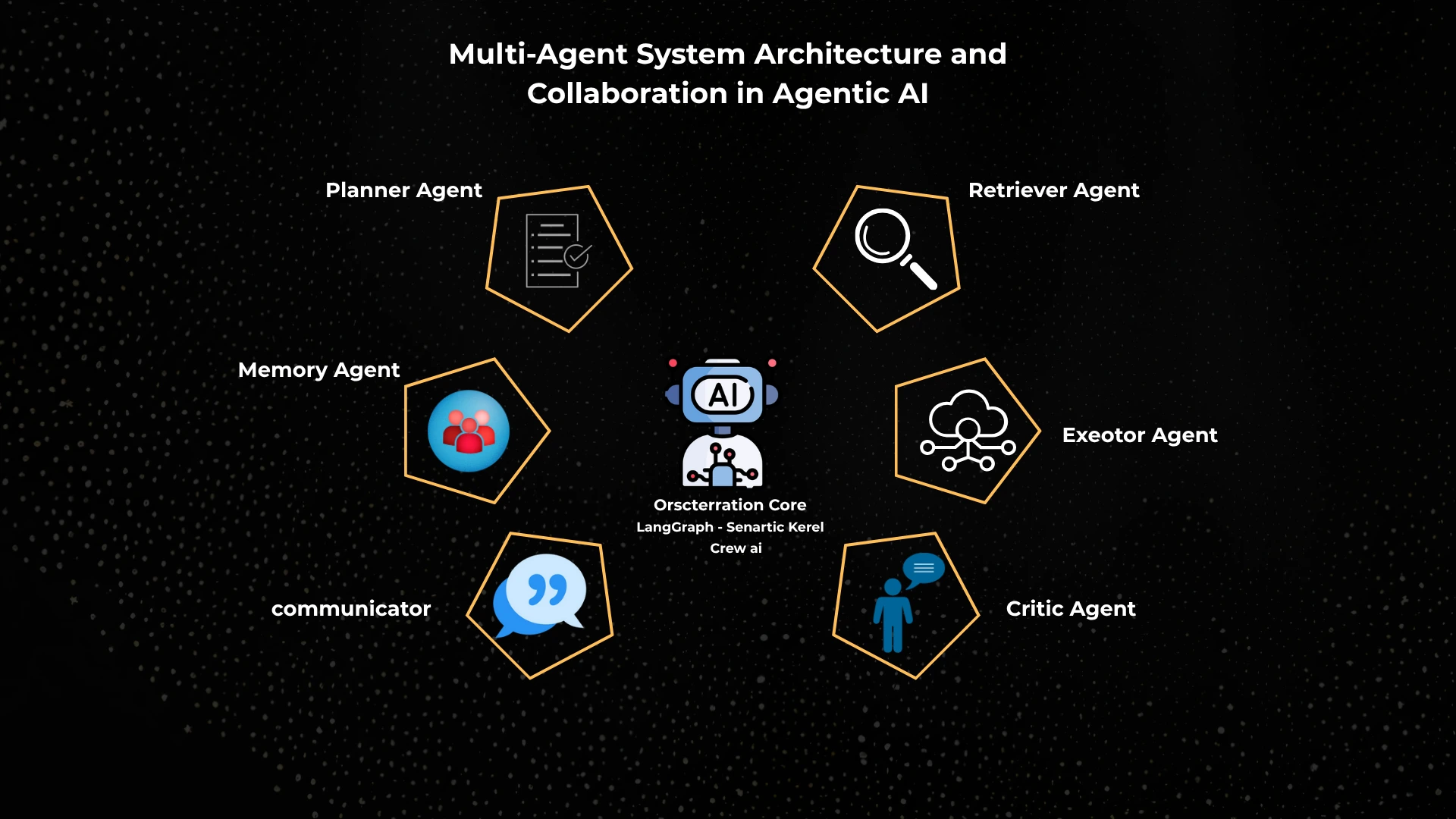
Practical Frameworks for Agent Architecture
Modern frameworks embody different aspects of agent architecture:
LangGraph — Graph-Based Reasoning
LangGraph uses node-based orchestration where each reasoning step becomes a traceable node.
This structure makes decision paths auditable and ideal for debugging complex multi-agent workflows.
CrewAI — Team-Based Execution
CrewAI treats agents as team members with distinct roles.
By mimicking human project collaboration, it enables distributed cognitive labor — perfect for research, customer support, or software development pipelines.
Semantic Kernel — Enterprise-Grade Orchestration
Microsoft’s Semantic Kernel integrates governance and policy enforcement directly into agent orchestration.
It allows enterprises to connect autonomous agents safely to corporate data systems.
Common Agent Architecture Patterns and Reasoning Loops
Patterns define how agents think.
These reasoning frameworks provide reusable templates for decision-making.
ReAct Pattern
Alternates between reasoning and action a structured “think-do-check” loop used for search, problem-solving, and tool interaction.
Reflexion and Critic–Refine
Introduces self-review.
After each output, the agent critiques and refines its own reasoning, improving reliability and factual accuracy.
Tree of Thoughts and Hierarchical Reasoning
Allows parallel exploration of multiple solution paths.
Supervising agents then evaluate and select the most promising outcome mirroring human brainstorming processes.
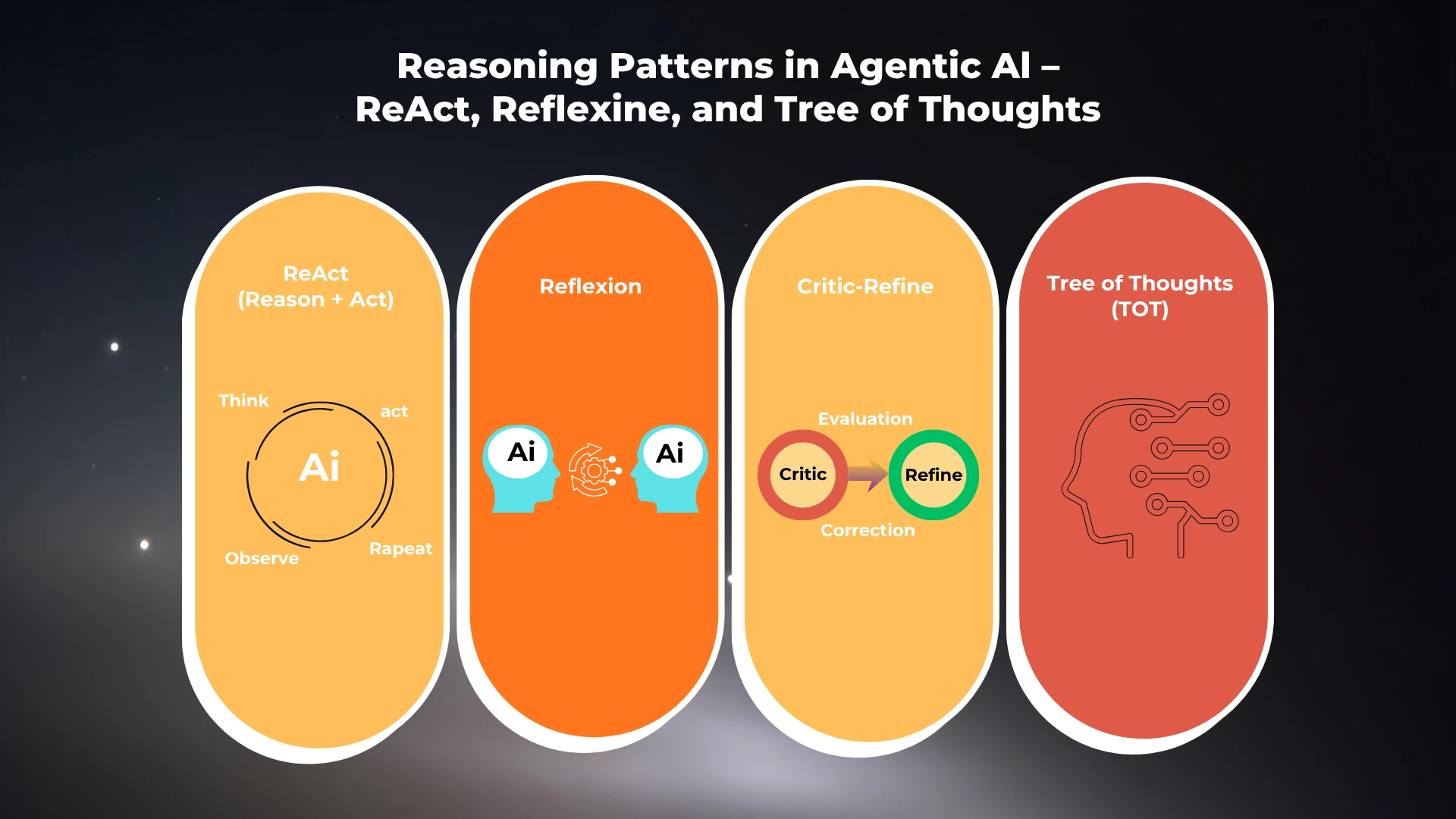
Why Agent Architecture Matters for Future AI Systems
The evolution from generative to agentic AI represents a shift from reaction to agency.
Strong architecture provides:
- Transparency: every action has a reasoning trace.
- Governance: embedded policies enforce safety.
- Scalability: modules evolve without retraining entire models.
- Collaboration: humans and agents share cognitive tasks seamlessly.
Organizations that invest in architectural literacy today will lead tomorrow’s transformation toward autonomous, trustworthy AI systems.
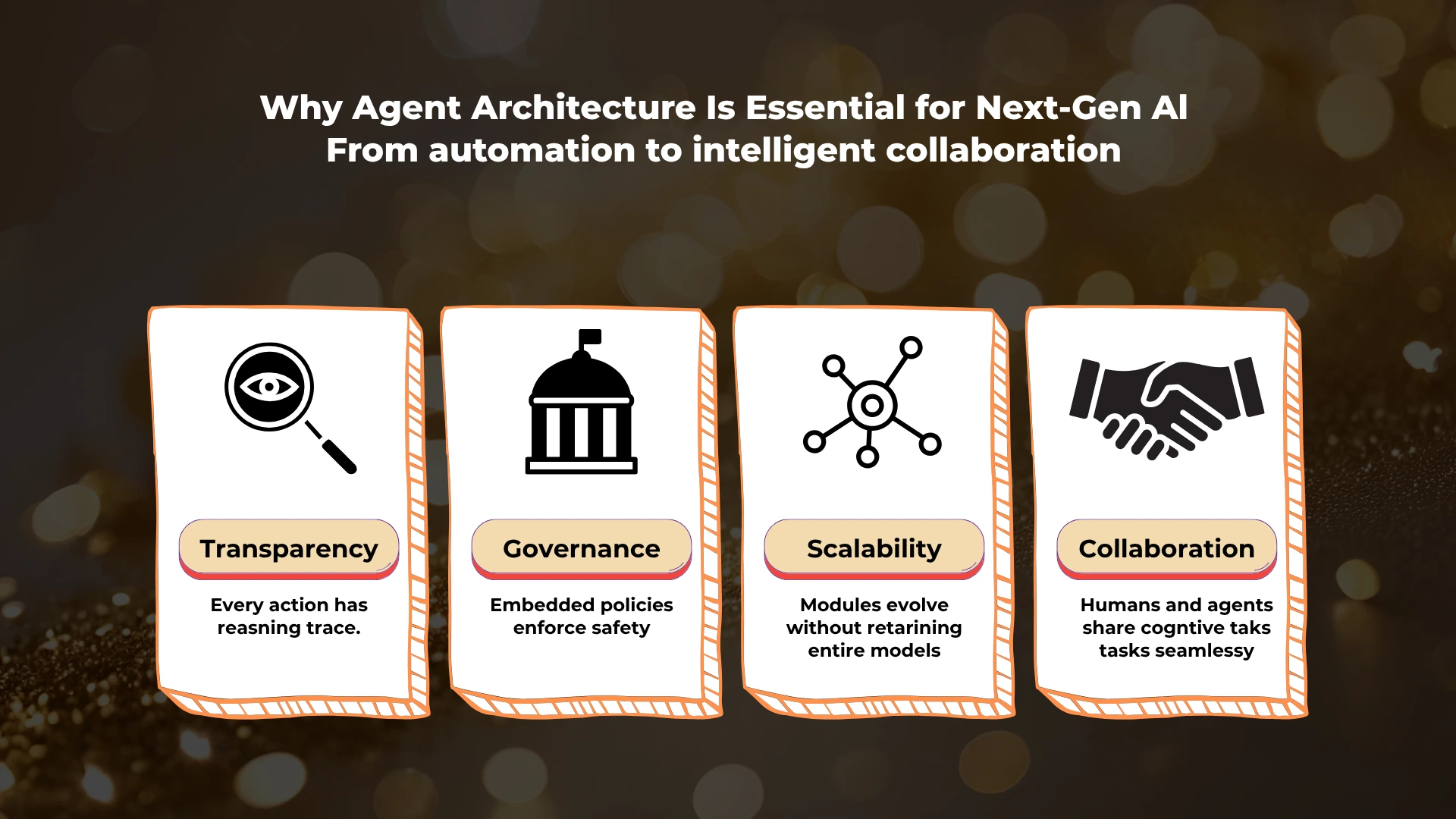
Conclusion — Architecture as the Core of Autonomous Intelligence
Agent architecture is the invisible infrastructure powering the new generation of Agentic AI.
It transforms static models into self-learning systems capable of reasoning, acting, and improving over time.
By embracing transparent design, modular reasoning, and ethical alignment, organizations can build agents that don’t just automate work they collaborate in it.
This is the true promise of autonomous intelligence: machines that think responsibly, act purposefully, and evolve alongside humanity.
You can also follow us on Facebook, Instagram, Twitter, Linkedin, or YouTube.
Frequently Asked Questions
It’s the structural design that defines how an AI agent perceives, reasons, acts, and learns autonomously.
Traditional AI follows rules; agentic architecture integrates reasoning and feedback, enabling goal-oriented behavior.
LangGraph, CrewAI, Semantic Kernel, and GraphRAG are leading examples.
It scales intelligence through cooperation between specialized agents, improving efficiency and resilience.
It can act autonomously, but best practice includes human-in-the-loop governance for ethical and safety compliance.

